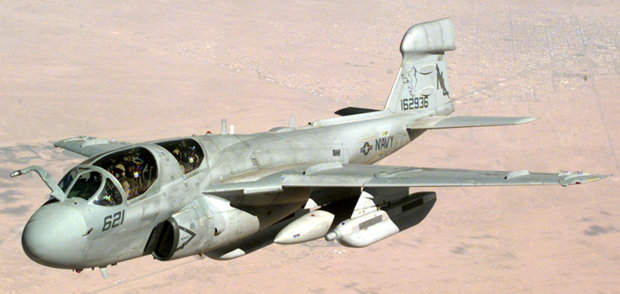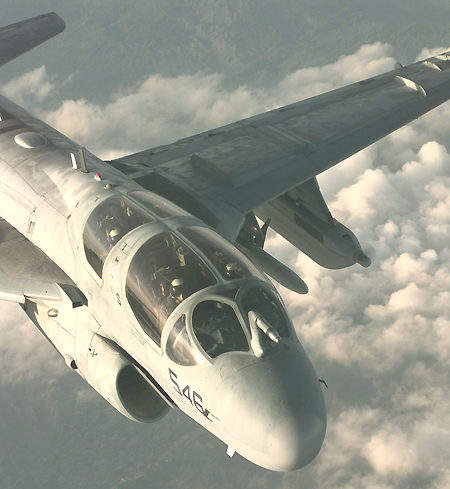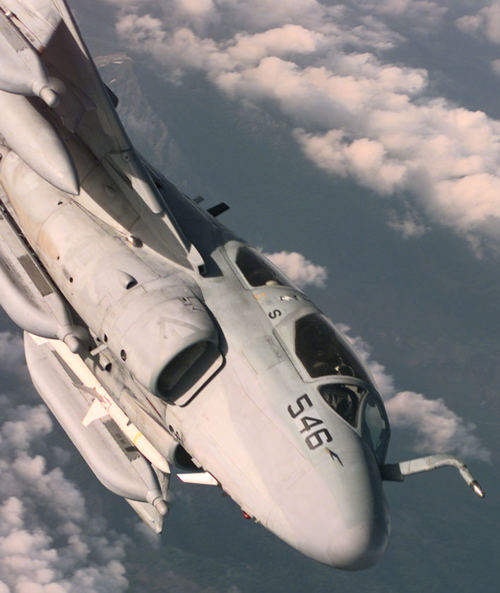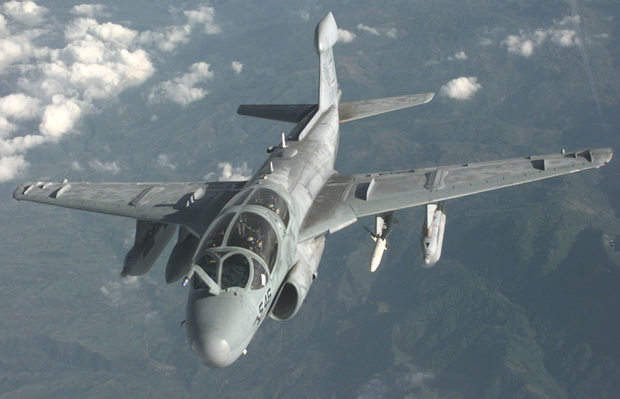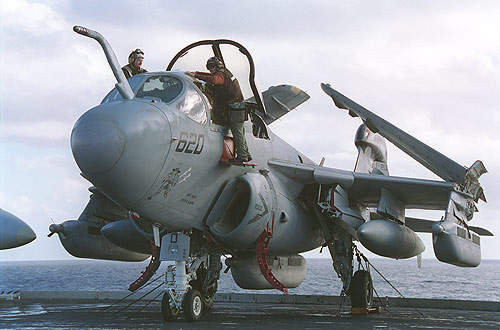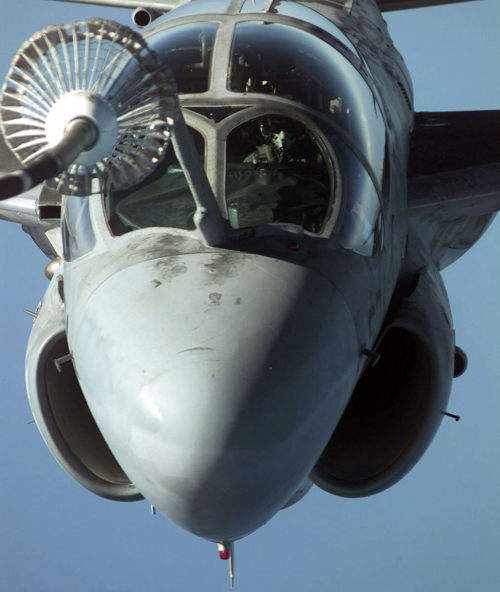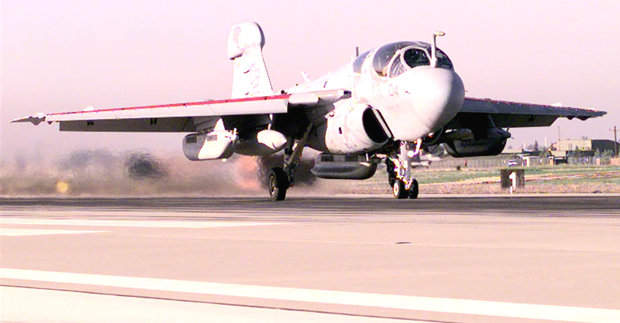The EA-6B Prowler is the primary tactical jamming aircraft of the US Navy, US Air Force and the US Marine Corps. The Prowler first entered service in the 1970s and has demonstrated its battlefield performance in Southeast Asia, in Operation Desert Storm, in Bosnia-Herzegovina and in Kosovo, enforcing the northern no-fly zone over Iraq and in Operation Iraqi Freedom.
The USN has a fleet of 124 Prowlers which equip USN aircraft carriers, forward land bases and the US Marine Corps squadrons.
The aircraft were to be retired and replaced by the EA-18G Growler, an electronic attack version of the F/A-18 Super Hornet, by 2012. Their service has, however, been extended beyond 2014.
In November 2008, the VAQ 132 electronic attack squadron held a ‘final flight’ ceremony for the Prowler, to mark the beginning of the squadron’s transition to the EA-18G Growler.
The mission of the aircraft is to accompany the strike forces and to carry out armed reconnaissance, electronic warfare and jamming operations. The Prowler is carried on all classes of the US Aircraft Carrier fleet: Enterprise, Nimitz, Kitty Hawk and John F Kennedy. The primary naval role is to protect the US or allied carrier group and aircraft by countering hostile radar and by jamming enemy communications. The Prowler also carries out electronic surveillance tasks and provides defence against incoming anti-ship missiles.
EA-6B cockpit
The aircraft is crewed by a pilot and three electronic countermeasures officers. The forward section of the cockpit accommodates the pilot on the port side and one ECM officer station equipped with the communications, navigation systems, and the defensive electronic countermeasures including the decoy dispensers. The rear cockpit accommodates two ECM officers and the ALQ-99 control and display stations.
Prowler weapons
The Prowler is armed with the Raytheon HARM high-speed anti-radiation missile, AGM-88. The HARM missile is used against land-based and seaborne radar-directed air defence artillery systems and surface-to-air missile systems. HARM has a range of over 90km (80 miles).
USMC Prowlers are fitted with the Northrop Grumman Litening AT targeting pod, for deployment in Iraq. The first was completed in 2007.
Countermeasures
The ALQ-99 is an extremely comprehensive tactical jammer, operating over a wide range of overlapping frequency bands including Band 1 (VHF) to Band 10 (Ku). The ALQ-99 development was sponsored by the US Navy and Air Force.
Several contractors have been involved in the development and production of the system. AIL Systems, prime contractors, developed the exciter and encoders; AEL Defense Corporation developed Band 9 and Band 10 transmitters; and Northrop Grumman (formerly Litton Systems), prime contractors for the ALQ-99E, developed transmitters and exciters. The current version is the ALQ-99F.
The Prowler carries five ALQ-99 pods, two under each wing and one under the fuselage. Each pod houses two powerful Continuous Wave (CW) transmitters which use beam steering to direct the jamming signal at the threat. An exciter in the pod tailors the parameters of the jamming signal. Each pod has a control computer linked to the ALQ-99 central processing unit on the aircraft.
The Central Processing Unit (CPU) processes the received threat signals, manages jamming operations and generates data for display to the crew. Prior to the mission, data on the characteristics of emitters possibly deployed by the hostile forces are downloaded into the threat library in the CPU.
The CPU compares the parameters of detected threat signals with the threat library using signal matching algorithms. Threats are identified, located, prioritised and the CPU recommends the action to be taken to counter the threat, or can automatically steer the transmissions to the target location and initiate the jamming sequence.
The receivers are configured to provide the Prowler with 360° coverage. Blister fairings on both sides of the tail fin house the receiver antennae for bands 1 and 2 (VHF and VHF/UHF). The fin top blister fairing houses higher frequency receive antennae systems.
Increased capability (ICAP) III
In 1998 Northrop Grumman was awarded a contract by the US Navy to carry out a major upgrade programme known as ICAP III (Increased Capability III) to further enhance the weapon system, including the addition of a new AN/ALQ-218 electronic warfare receiver and LR700 with selective reactive jamming capability to counter frequency-hopping intercept radars, Link 16 datalink and an integrated communications jamming system.
The ICAP III-equipped Prowler made its first flight in November 2001 and entered low-rate initial production (LRIP) in August 2003.
In April 2004, the system was approved to enter operational evaluation (OP/EVAL). Initial operating capability was achieved in early 2005 and the first squadron was deployed to support operations in Iraq. Contracts were placed for the upgrade of 14 aircraft all delivered. A follow-on contract for four (plus one option) aircraft was placed in May 2006, which were delivered in 2008. A third lot of seven for the US Marine Corps was ordered in May 2008 for delivery in 2010. The US Navy ordered a fourth lot of nine systems in September 2008.
Turbojet engine
The aircraft has two Pratt & Whitney J-52 -P-408 turbojet engines each rated at 50kN. The aircraft carries a maximum internal fuel supply of 7,000kg and can also carry an extra 4,500kg externally in fuel pods. The unrefuelled range of the aircraft on internal fuel is 1,800km (1,000nm). For in flight refuelling, a refuelling probe is fitted in front of the cockpit.
The aircraft cruises at 775km/h and the maximum altitude is 12,550m.

